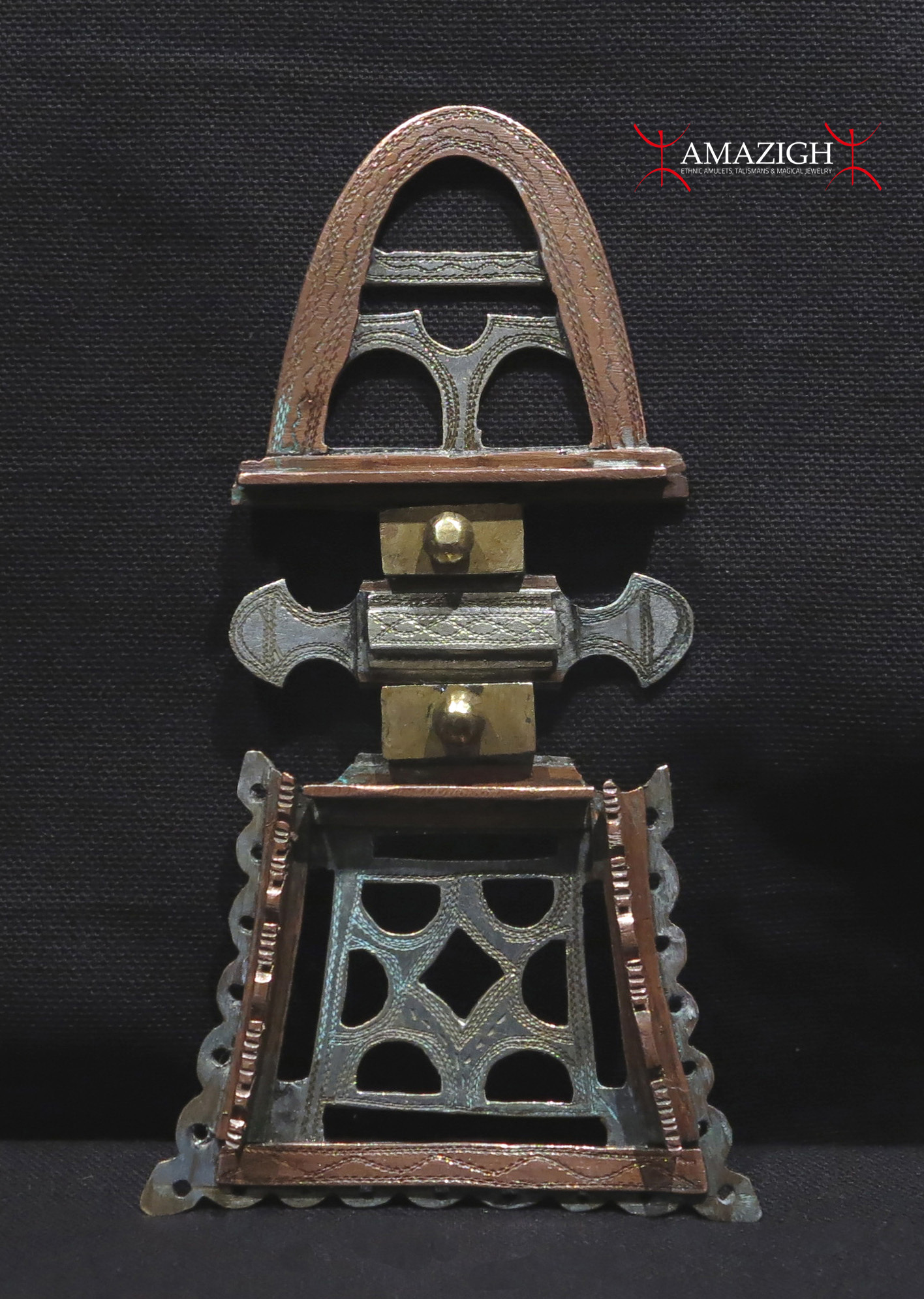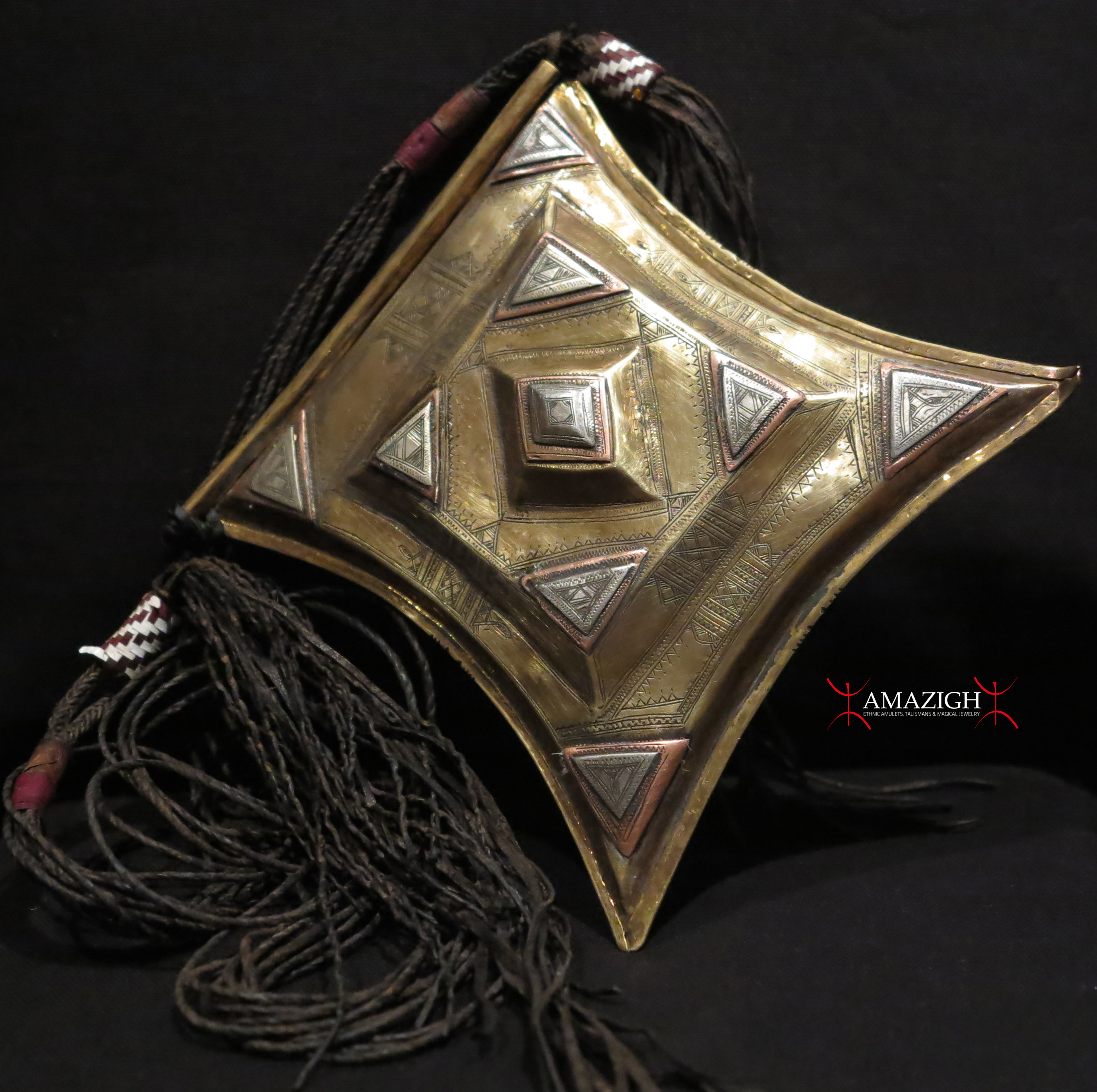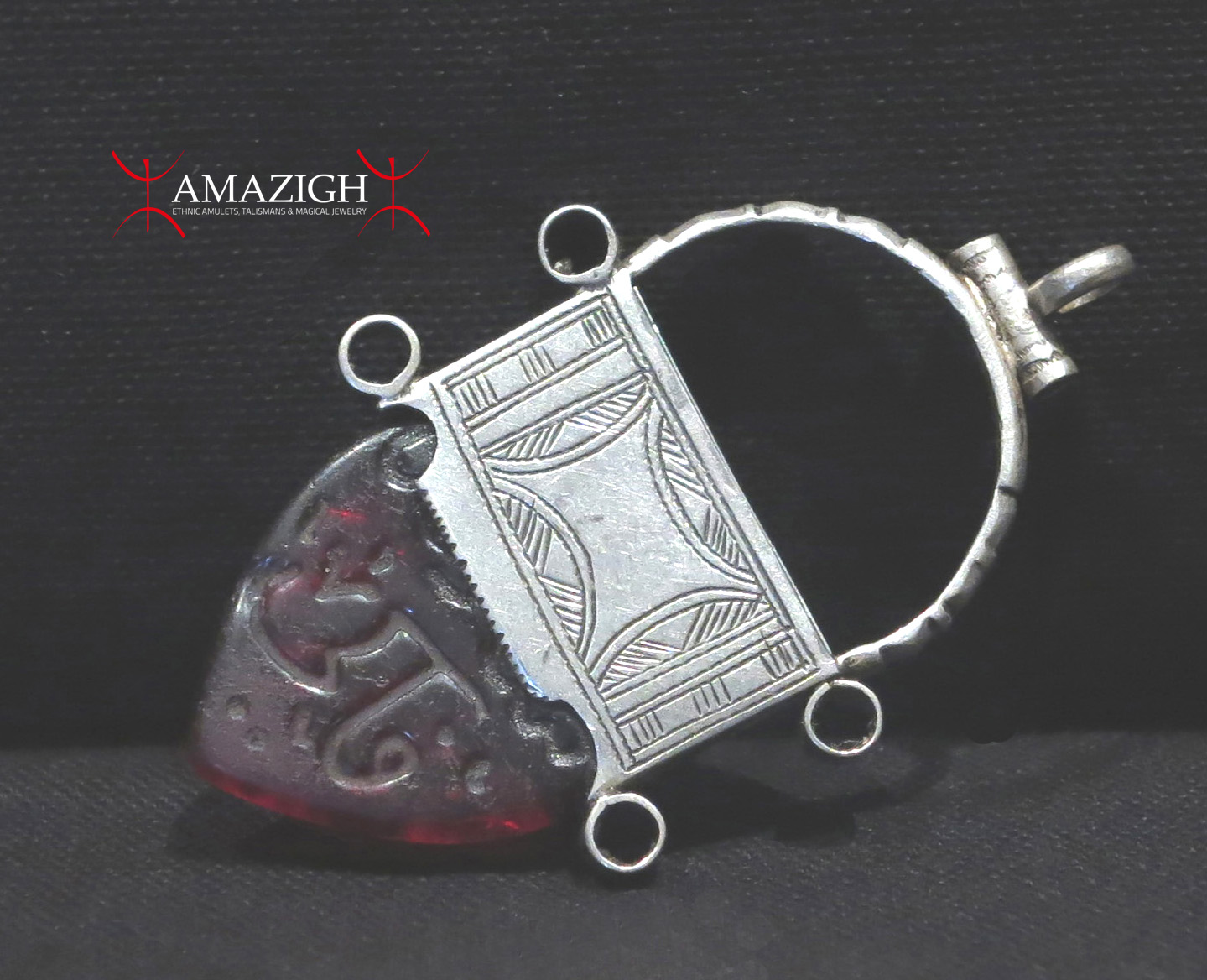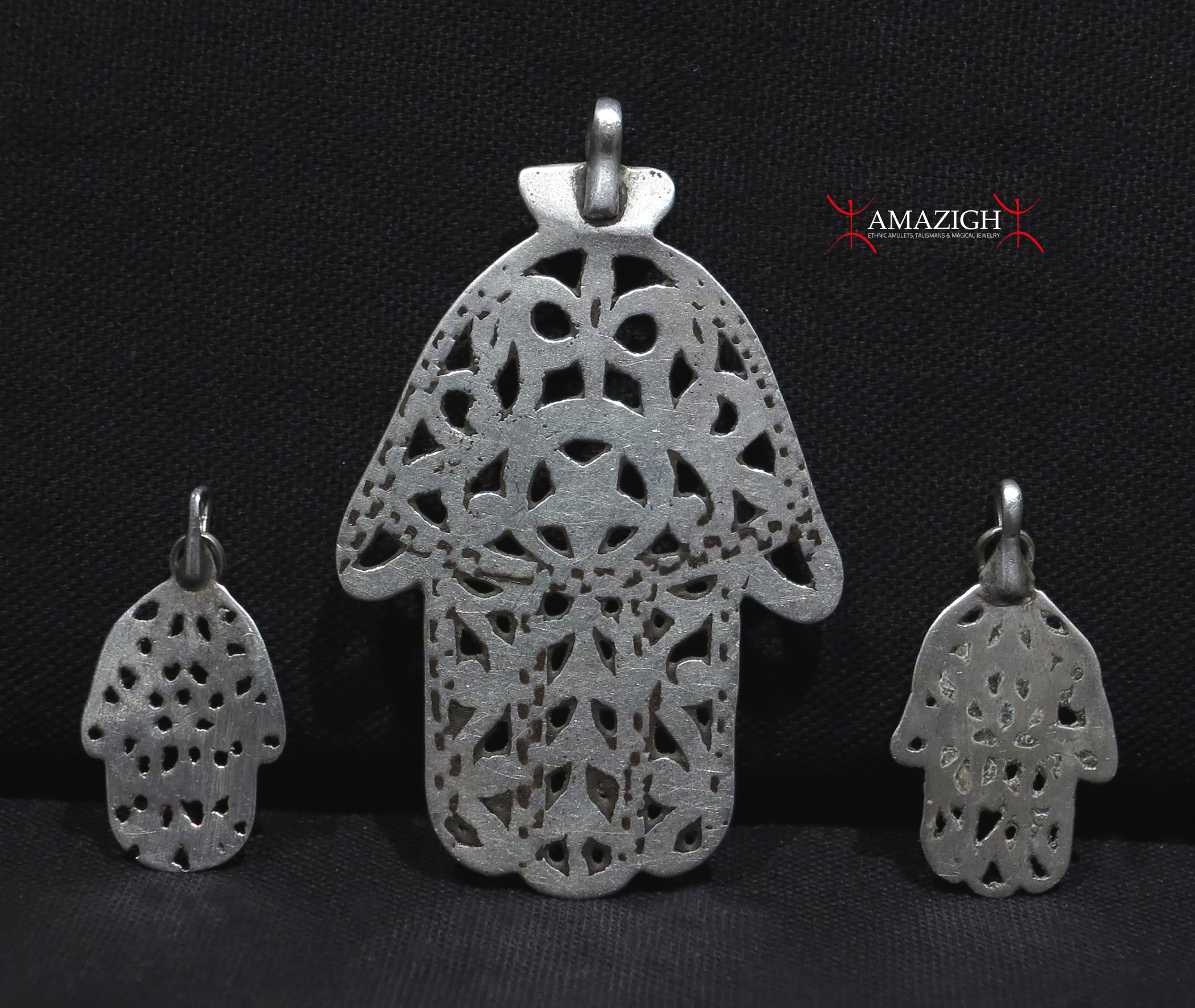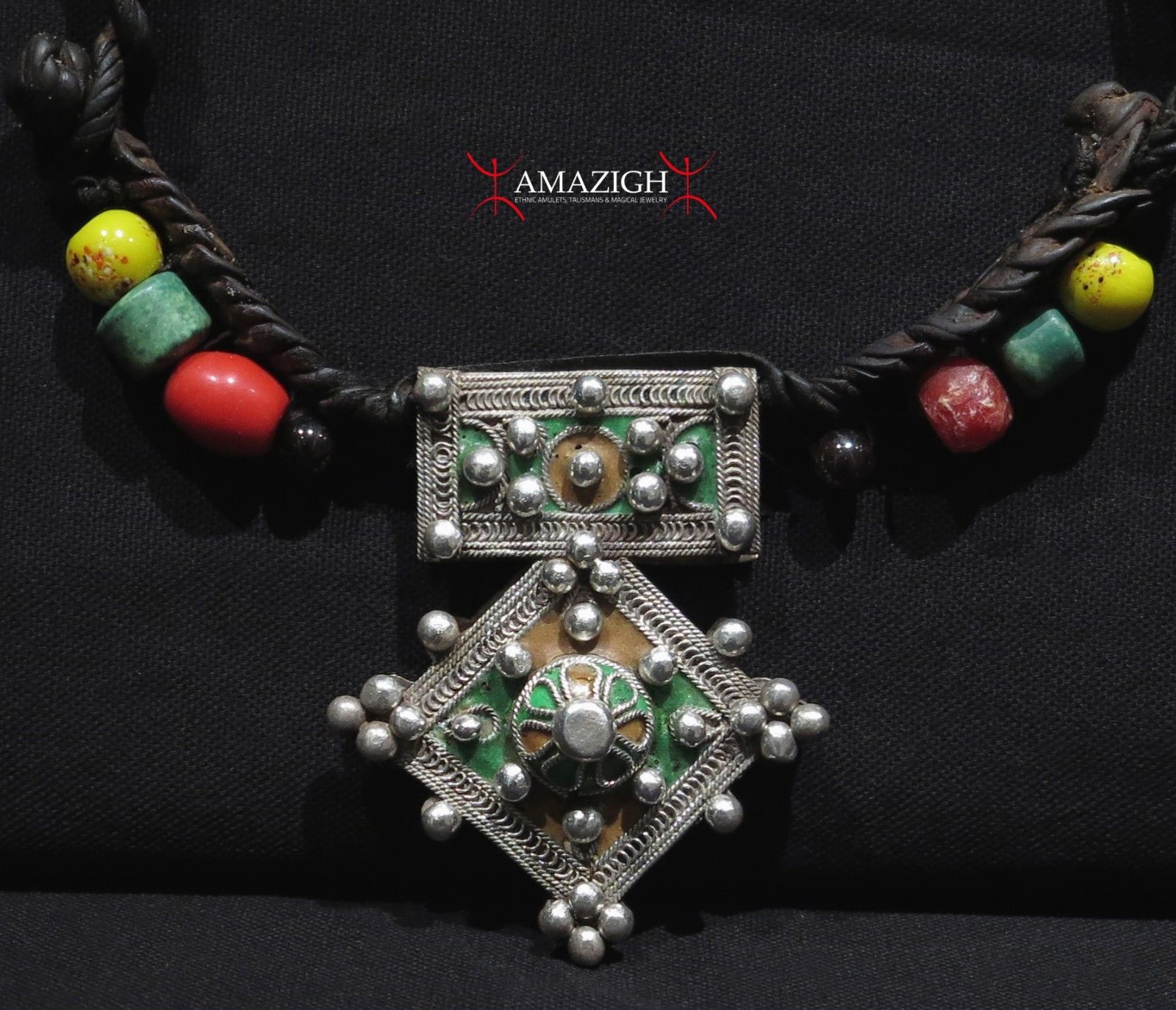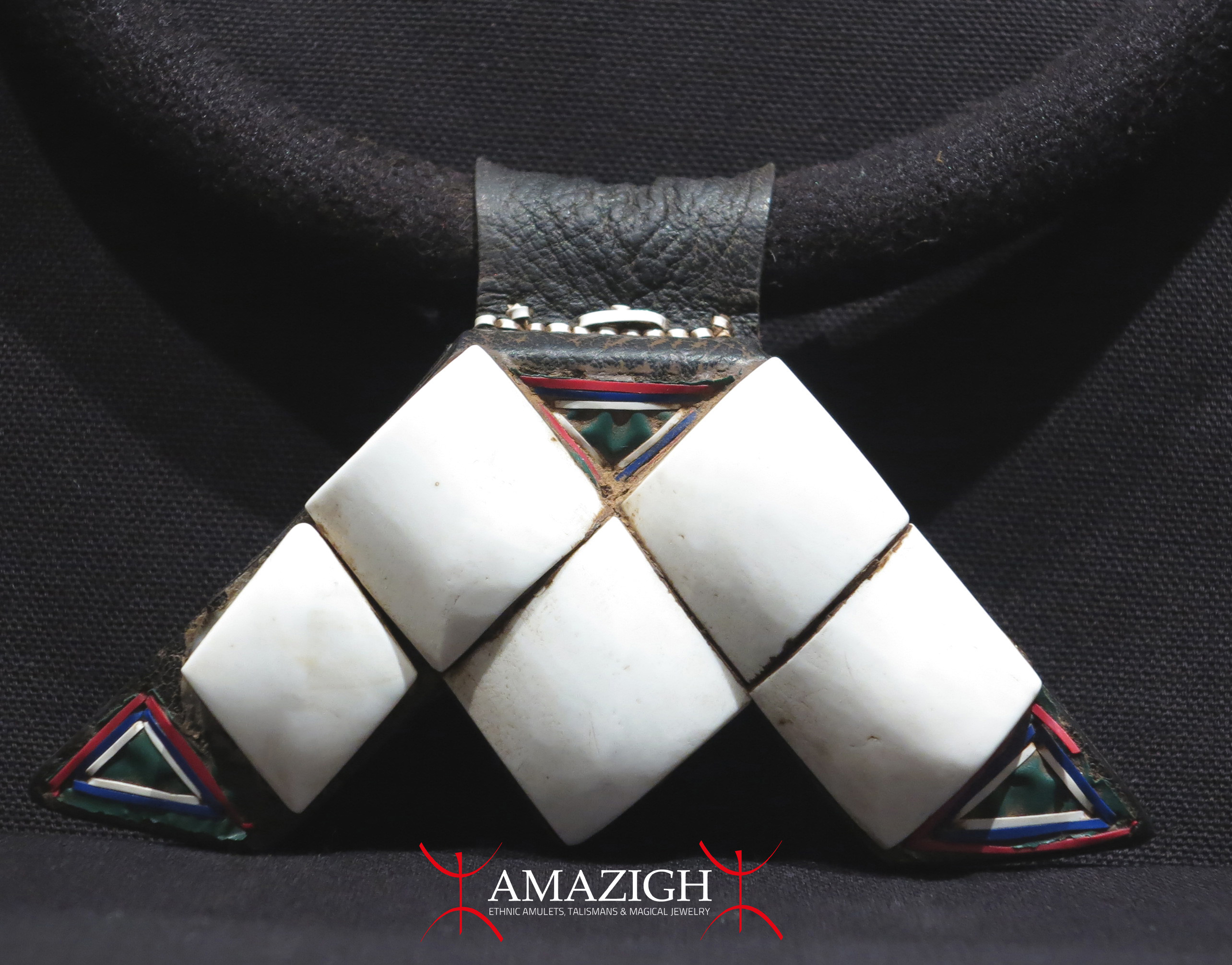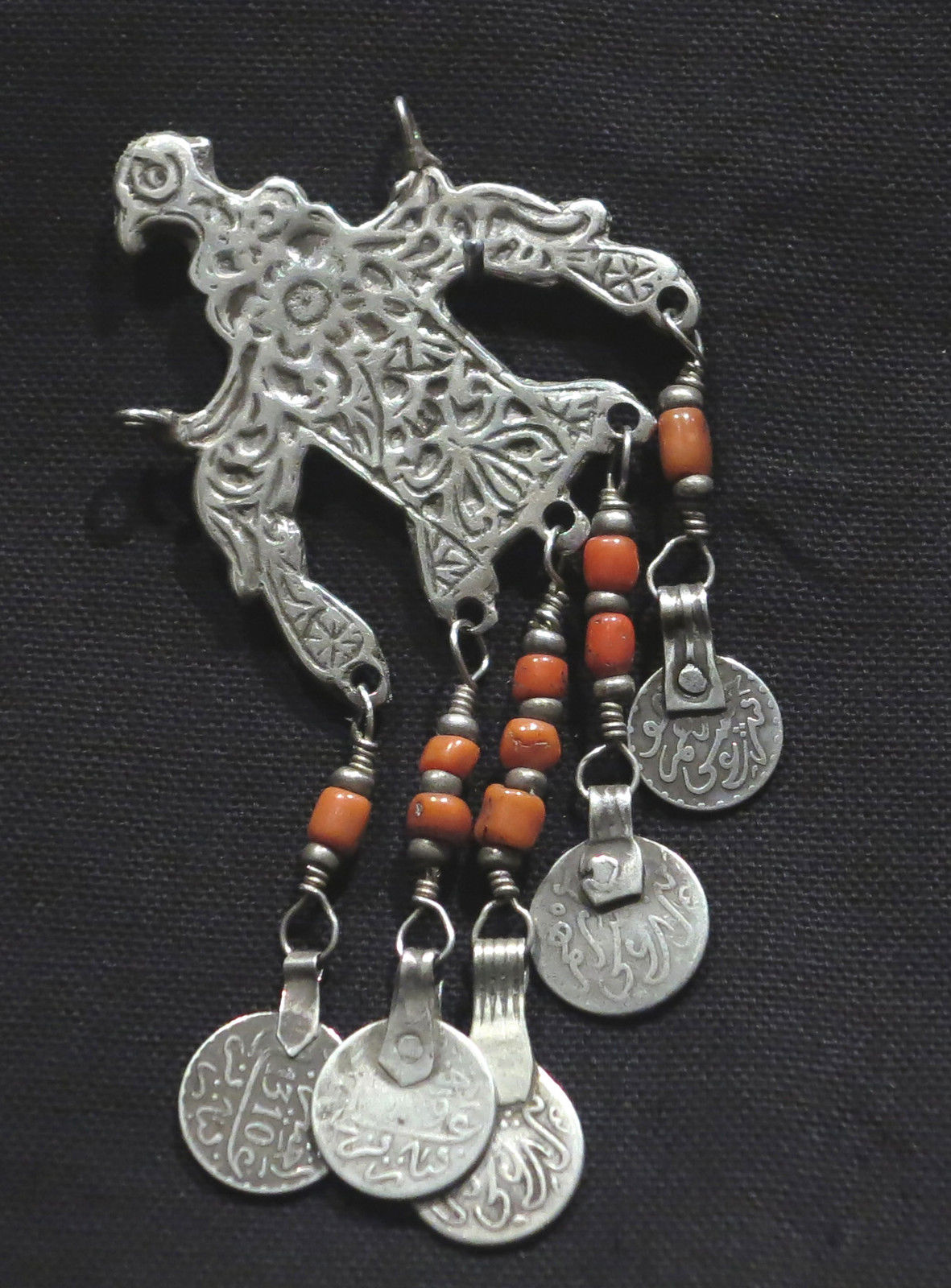Tuareg Veil Weights – ASSROU N’ SWOUL – Niger
Geometric layers of copper and silver on bronze sheet. Cm. 14,1 high (5.55”) x cm. 7,8 width (3.07”); gr. 104,1 (3.67 oz.). A genuine and old Tuareg veil weight known as " assrou n' swoul ", generally translated as " the key which is thrown over the shoulder ". This elaborate key-like pendant is often worn...

